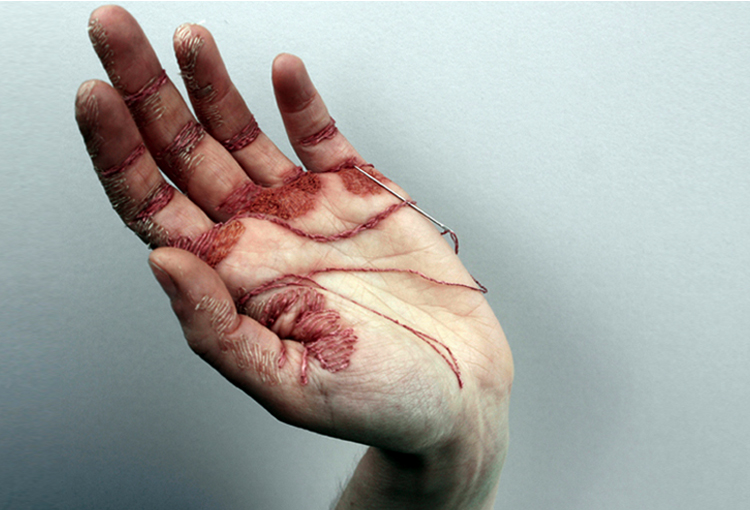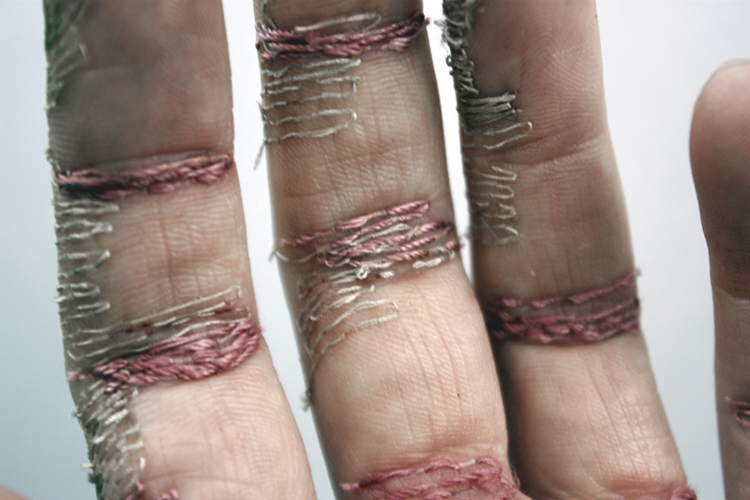 “To me what makes a powerful work of art is when it moves one to acknowledge the wealth of feelings inside.”
“To me what makes a powerful work of art is when it moves one to acknowledge the wealth of feelings inside.”
These are the words of Eliza Bennett, no, not Elizabeth Bennett, created in the mind of Jane Austen, but an artist based in London and creator of the grotesquely beautiful photographic work titled: ‘A Woman’s Work is Never Done’.
Bennett used her hand as a ‘canvas’ and stitched into the top layer of skin to create the appearance of a ‘work worn hand’.
She certainly evoked strong emotions, “a wealth of feelings inside,” with this controversial and powerful protest of human value.
There have been mixed responses, some saying it’s “a form of egocentric self harm” and it’s easy to see how they can draw upon that conclusion, especially with her account of the art work’s conception.
“The technique, I recall first applying to my hand under a table during a home economics class in school. I was totally amazed to find that I could pass a needle under the top layers of skin without any pain, only a mild discomfort”.
I don’t think the typical teenage girl would usually be seen trying to push a needle through her own flesh (although, maybe it is closer to reality than we would like to imagine).
Bennett uses the technique of embroidery, which is “traditionally employed to represent femininity” and applies this in order to “challenge the pre-conceived notion that ‘women’s work’ is light and easy. Aiming to represent the effects of hard work arising from employment in low paid ‘ancillary’ jobs, such as cleaning, caring and catering, all traditionally considered to be ‘women’s work’.”
Bennett hopes to “represent the effects of hard work arising from employment in low paid ‘ancillary’ jobs, such as cleaning, caring and catering” and she has done so, she has represented the hardships of the world’s labours, in one simple and identifiable form.
These hands symbolise the trials and tribulations of the everyday worker, if the art has evoked shock within viewers then it has already realised its true purpose. Humans subject themselves to harm on a daily basis, hard work that leaves hands calloused, red and bloody at times, but no one sees this as ‘self harm,’ they see it as ‘working to survive’. In order to shed light on these individuals and their hardships, maybe some “mild discomfort” had to be sacrificed by the artist to truly encapsulate the message, in every possible way.
http://www.elizabennett.co.uk/
Taya Sweeney









